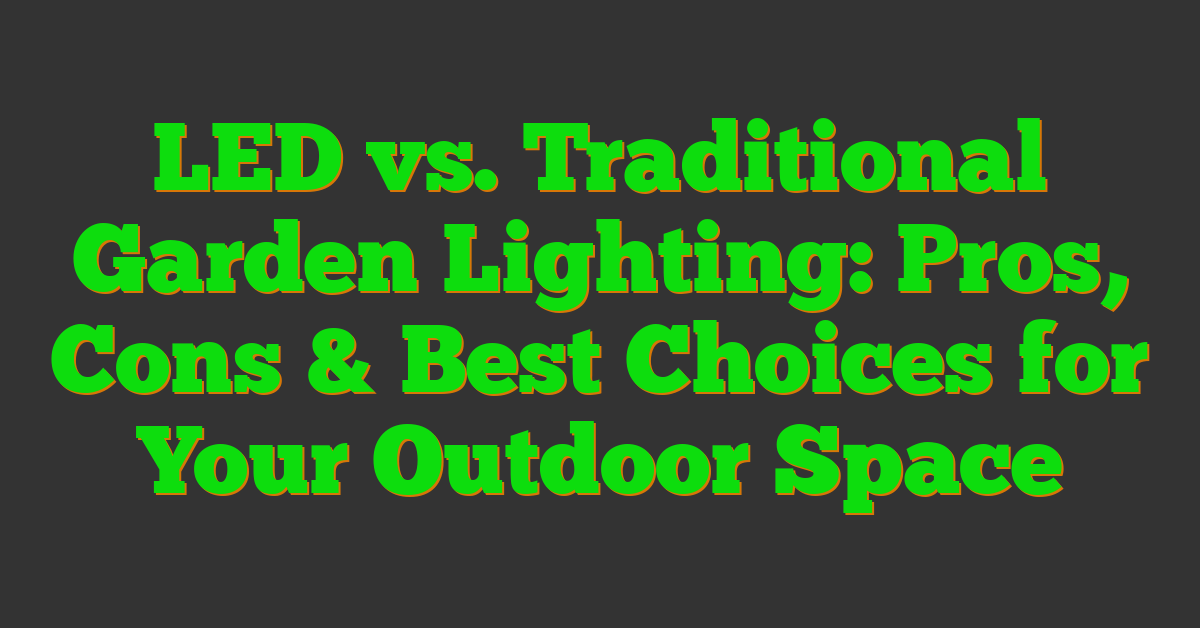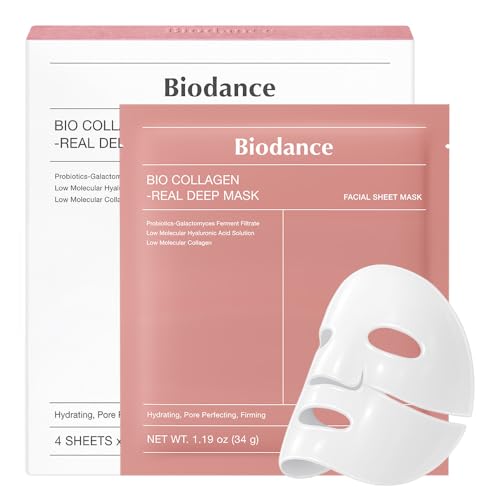Spending evenings in my garden has always been a joy, but the right lighting can truly transform the space. I’ve found myself torn between choosing LED lights and sticking with traditional garden lighting options. Each has its own charm and benefits that cater to different needs and aesthetics.

LED lighting, with its energy efficiency and long lifespan, offers a modern touch that’s both practical and stylish. On the other hand, traditional garden lights bring a classic warmth and a certain nostalgia that’s hard to resist. Deciding which path to take wasn’t easy, and I’m excited to share what I’ve learned about balancing these two lighting options to create the perfect outdoor oasis.
Overview of Garden Lighting Options
Selecting the right lighting for my garden involves evaluating various options to enhance both functionality and aesthetics. I consider LED and traditional lighting types to determine the best fit for my outdoor space.
LED Garden Lighting
LED lights provide several benefits for garden use. They consume up to 80% less energy, lowering electricity costs significantly. LEDs last approximately 25,000 hours, reducing the need for frequent replacements. Additionally, they offer a wide range of color options and brightness levels, allowing for customized lighting designs.
Traditional Garden Lighting
Traditional lighting options, such as incandescent and halogen bulbs, create a warm and classic ambiance. These lights typically have a lower initial cost compared to LEDs, making them an affordable choice upfront. However, they consume more energy and have a shorter lifespan of around 2,000 hours. Traditional lights are ideal for achieving a nostalgic or rustic look in the garden.
Comparison Table
| Feature | LED Lighting | Traditional Lighting |
|---|---|---|
| Energy Efficiency | Up to 80% less energy | Higher energy consumption |
| Lifespan | 25,000 hours | 2,000 hours |
| Initial Cost | Higher upfront cost | Lower upfront cost |
| Maintenance | Low | High |
| Color Options | Wide variety | Limited |
| Brightness | Adjustable | Fixed |
This overview highlights the key differences between LED and traditional garden lighting, helping me make an informed decision to create an ideal outdoor environment.
Benefits of LED Lighting
Switching to LED lighting transforms your garden with multiple advantages. Here are the key benefits that make LEDs a superior choice.
Energy Efficiency
LED lights consume significantly less energy compared to traditional lighting options. Specifically, LEDs use up to 80% less electricity, reducing your energy bills and environmental impact. This efficiency is achieved through advanced technology that minimizes power loss.
| Lighting Type | Energy Consumption |
|---|---|
| LED | Up to 80% less |
| Incandescent | Higher |
| Halogen | Higher |
Longevity
LEDs offer exceptional durability and lifespan. They last approximately 25,000 hours, which is more than ten times longer than traditional incandescent and halogen bulbs. This longevity means fewer replacements and lower maintenance costs for your garden lighting.
| Lighting Type | Lifespan |
|---|---|
| LED | ~25,000 hours |
| Incandescent | ~2,000 hours |
| Halogen | ~2,000 hours |
Benefits of Traditional Lighting
Traditional garden lighting offers unique features that can enhance your outdoor space.
Warm Light Quality
Traditional bulbs emit a warm glow that creates a cozy and inviting atmosphere in gardens. This soft light enhances the natural colors of plants and architectural features, fostering a nostalgic ambiance that many find appealing.
Initial Cost
The initial price of traditional lighting fixtures and bulbs is generally lower than LED options. This affordability allows for extensive garden coverage without significant upfront investment. Additionally, widespread availability of traditional bulbs makes them a cost-effective choice for immediate installation.
Cost Comparison
Comparing the costs of LED and traditional garden lighting helps me make an informed decision for my outdoor space. Here’s how they stack up in the long run and in maintenance.
Long-term Savings
LED lights cost more upfront, averaging $15 per fixture, while traditional bulbs are around $5 each. However, LEDs use up to 80% less energy, reducing my electricity bills significantly. Over 10 years, LEDs save approximately $300 compared to traditional lighting. Additionally, LEDs last about 25,000 hours versus 2,000 hours for incandescent bulbs, minimizing replacement costs.
Maintenance Expenses
With LEDs lasting over ten times longer, I replace them far less often. For a garden setup with 20 lights, I save about $200 on bulbs every decade by choosing LEDs. Traditional lights require more frequent changes, increasing both time and money spent on maintenance. Lower maintenance needs make LEDs a cost-effective choice for keeping my garden illuminated with minimal effort.
Installation and Maintenance
Installing and maintaining garden lighting differs between LED and traditional options. Each type offers unique benefits in setup and upkeep.
Ease of Installation
LED lights simplify the installation process. They fit most existing fixtures without needing extra modifications. If upgrading from traditional bulbs, I can often use the same sockets. Additionally, many LED fixtures come with easy-to-follow instructions, making setup straightforward. Traditional lights might require additional wiring or adapters, especially for extensive garden areas. If installing new fixtures, traditional options could take more time and effort compared to LEDs.
Upkeep Requirements
LED lights require less maintenance over time. With a lifespan of about 25,000 hours, I replace them infrequently. If I choose traditional bulbs, which last around 2,000 hours, I’ll need to replace them roughly twelve times less often than LEDs. Furthermore, LED fixtures are more durable and resistant to elements, reducing the need for regular inspections. Traditional lighting might need more frequent checks and bulb replacements to maintain consistent lighting in my garden.
Environmental Impact
Choosing the right garden lighting affects both your energy usage and the environment. Here’s how LEDs and traditional lights compare in these areas.
« Building a Hardscape BBQ Area: Ultimate Tips for a Stunning Outdoor Space Landscape Edging Materials Compared: Stone, Plastic & Metal Pros and Cons »
Energy Consumption
LED lights consume up to 80% less energy than traditional incandescent bulbs. For example, a typical LED bulb uses about 10 watts, while an incandescent bulb uses 50 watts for the same brightness. This reduction directly lowers electricity bills and decreases overall energy demand.
Sustainability
LEDs have a longer lifespan, lasting approximately 25,000 hours compared to 2,000 hours for incandescent bulbs. Fewer replacements mean less waste and reduced demand for raw materials. Additionally, LEDs do not contain harmful substances like mercury, making them more environmentally friendly when it comes to disposal and recycling.
Conclusion
Choosing the right lighting for my garden has been a rewarding journey. Embracing LED lights has not only cut down my energy bills but also added a sleek modern touch. At the same time traditional fixtures bring that cozy timeless feel I love. Blending both options lets me enjoy the best of both worlds creating an inviting and sustainable outdoor space. It’s exciting to see how these lighting choices enhance my garden’s ambiance and functionality. I’m looking forward to continuing to tweak and improve the setup as the seasons change. Lighting up my garden this way has truly transformed it into a place I’m proud to share and spend time in.














